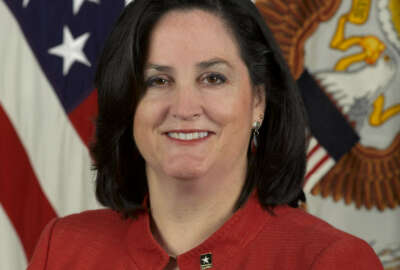
Army aims to drive culture change through upgraded enterprise business system
Four years after launching the General Fund Enterprise Business System, Project Manager Col. Matt Russell said that most users in the organization have fully...
Four years after launching the General Fund Enterprise Business System, Project Manager Col. Matt Russell said that most users in the organization have fully adopted it, and it’s time to focus on upgrades.
The upgrades will focus on business processes, working on streamlining financial management systems and upgrading to a commercial off-the-shelf contract writing system.
“Proposals are inbound and my source-selection team is going to kick their source-selection off in the days to weeks ahead, so that’s pretty exciting,” Russell told the Federal Drive with Tom Temin. “Contract writing solutions … replaces a number of antiquated systems that have been out there for 15, 20 years, some even longer. And it will take it into the 21st century.”
He said the system will support office management of contracts, the actual writing of contracts and a complicated interface with the financial management system.
Streamlining the financial management system will help move the Army business processes toward an auditable system, providing financial managers and comptrollers with an enterprise look at how the budget is being executed.
“That will drive either a doctrinal change, a leadership change or a material change,” Russell said.
He referred to a number of recent quotes where the secretary of defense and the chief of staff have said that the Army needs to learn how to do more with less.
“GFEBS fits that bill because of the enterprise capability that they bring,” he said.
He said it will change the “cost culture” in the Army, the use-it-or-lose-it philosophy toward budgeting. Being able to fine-tune budgets while simultaneously getting a bigger picture will allow for more efficient, targeted allocations. And GFEBS provides a pretty big picture.
Russell said roughly $1.5 billion was transacted through GFEBS in 2015.
Russell attributes the cultural changes to an effect of change management, which is where individuals have been working on a system for 15 to 20 years, and suddenly have to adapt to a new system.
Russell said change management usually happens over a period of three to four years. GFEBS launched in 2012, so he believes that its roughly 40,000 users are approaching the end of that process. He said he sees their adoption of the system through their increased interaction in the upgrade system.
“It’s been championed by the financial management community,” Russell said. “The leadership there, the leadership across the Army has truly championed this capability. People are getting smarter on it every day. They’re understanding what they can do with the system, and where the system can go.”
The users can file requests for capability when they need a new feature in the system, or problem statements when they find issues, which are sent up to the DoD and evaluated. If DoD determines that they’re valid, it makes a determination whether the solution is going to become integrated into GFEBS, one of four other enterprise resource planning systems, or a new system altogether.
However, the general movement is away from proliferation of systems, Russell said. The goal is to streamline and integrate as many systems as possible into enterprise approaches.
Russell said there are plenty of requests for capability, more than the Army has resources to provide. That’s why there’s a strict governance process in place, to determine what is most important and effective.
Currently, one such project is a labor management system, which would track how much time and money is being spent on labor. Russell said the Army currently has a number of systems that do that, but they don’t have an enterprise approach that can view the overall picture, and factor that into total cost output to provide auditable numbers.
Copyright © 2025 Federal News Network. All rights reserved. This website is not intended for users located within the European Economic Area.
Daisy Thornton is Federal News Network’s digital managing editor. In addition to her editing responsibilities, she covers federal management, workforce and technology issues. She is also the commentary editor; email her your letters to the editor and pitches for contributed bylines.
Follow @dthorntonWFED
Related Stories




